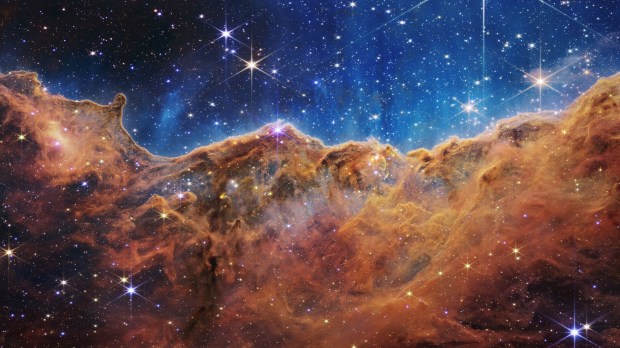Courtesy of the hard work of scientists, along with some amazing technology, the Webb telescope has captured images that give us insights into the very origin of human life itself.
I recently saw another image that urged me to look back, not to a point in time billions of years ago—that would be spectacular enough. Rather, it caused me to catch of glimpse of something much more impressive: eternity.
I speak, of course, of the image of a child in the womb.
For a Christian, it is difficult to see both photos without thinking of Genesis 1:1: “In the beginning God created the heavens and the earth.”
But before the beginning, the baby pictured above was in the eternal and omniscient mind of God. Before the earth, before the light, before the firmament, before the plants and birds, before the beasts of the earth, that baby was in the mind of God.
Beyond that, in the eternal now of God, that baby has been nestled in the timelessness of God’s love. Stars, galaxies, planets—these things will burn out. But God’s love for that baby has neither origin nor end. That baby’s story is a love story, and it began before the beginning.
And so did yours.
Seeing reality through the lens of God’s love
For all the magnificent truth of which photos could inform us, we are often myopic and fail the eye test that connects vision with meaning. We tend to miss the meaning of both forest and trees—of both babies and galaxies.
Victor Hugo once asked, “Where the telescope ends, the microscope begins. Which of the two has a greater view?” The greatest insight, however, lies in neither telescope nor microscope, but in the viewer herself, who is delightfully challenged to view reality through the lens of God’s love.
As any optometrist can assure you, if you stare at the sun too long, you will go blind. The human eye can only take in a certain amount of light before it is overwhelmed. But the reverse is also true: if you refuse to allow light to shine on reality, you live in self-imposed blindness that goes well beyond retinas and optic nerves.
Whether telescope or microscope, we must see reality
The recent images from NASA shed light on a reality that has existed for quite some time; the only difference is that we can now see those images.
But some will refuse to discern what they see through the telescope: the handiwork of God. Worse, some people will use these images as “proof” that there is no God. That’s a sad reaction, but not a surprising one. After all, recent generations have rejected the reality that human life is evident through the microscope.
It is a sad fact to deny reality, largely because reality is good. As Genesis 1:31 informs us, “And God saw everything that he had made, and behold, it was very good.”
It still is.
We Catholics must choose to see reality. We must also recognize that the most wonderful realities — especially God’s eternal love for each one of us — cannot exactly be captured on film.
But whether it’s babies or galaxies, the wise know what they are looking at.



